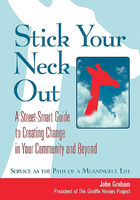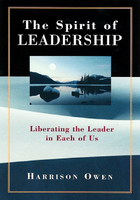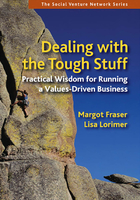WHY BUSINESS IS BEST EQUIPPED TO FIGHT GLOBAL POVERTY
It's not just that traditional methods have failed. Businesses possess unique characteristics that are ideally suited to the task of innovating new approaches — and taking them to scale.
There's nothing mysterious here. Poor people tell us they're poor because they don't have enough money — and who knows more about making money than businesspeople?
Private business possesses three overarching and undeniable advantages in addressing the challenge of poverty:
? Profitable businesses attract substantial capital.
? Successful businesses hire lots of people.
? Successful businesses are capable of reaching scale.
These factors are the foundational truths on which The Business Solution to Poverty is grounded. However, there are additional factors that we believe bolster the economic power of business.
? Businesses, especially well-established companies, often can marshal all the necessary specialized expertise in design, financial management, marketing, and other fields that are usually lacking or inadequate in either the public sector or the citizen sector.
? Private businesses tend to be less susceptible to political pressure than governments, multilateral institutions, and most citizen-sector organizations — especially in countries with weak governments.
? Prosperous enterprises stimulate economic growth in the communities where they do business.[1]
Let's take a look at a few numbers to get a sense of perspective on the issue of development.
Seventy trillion dollars. That's $70,000,000,000,000, or $70 × 1012. This number is the estimated world gross domestic product (GDP) for 2012 — clearly a very large number by anyone's standards. And the World Bank's estimate for 2013 is $75 trillion at this writing.[2] Most of the economic activity represented by those numbers takes place in the Global North — about $41 trillion, in fact, or nearly two-thirds of the 2012 total, as compared with the $12 trillion generated by the emerging economies of the South.[3] And every year, according to the Financial Times, approximately $1 trillion more is invested in emerging economies.[4]
So, what can we conclude from all this number-mongering? There's already a lot of money invested in the countries we consider poor. Seeking capital for the ventures we propose isn't like asking for money to set up businesses on Mars. Because another $1 trillion is invested every year in the Global South, rich-country investors are obviously eager to find opportunities for lucrative new investments there. Just ask your broker or financial advisor.
There you have some of the basic logic on which this book is based.
What Business Can Do
If you start with the premise that people are poor because they lack money, the most direct solution for poverty is to provide poor people with jobs paying decent wages or to help farm families generate more income from the land they till or from businesses they run. There's also an indirect solution — enabling poor people to save money by providing them with products and services that replace more expensive options. For example:
? If a poor family gains access to clean water, its health will improve, those family members of employable age will be better able to gain and hold jobs, and it will save money other wise used up in buying medicines or paying doctors' or hospital bills (or, worse, on charlatans, miracle cures, or expired or counterfeit drugs) — money that can now be used for better nutrition, school fees and school uniforms, better clothing, or home improvements. Similar reasoning applies when that family is provided with better nutrition or health care.
? Access to education yields similar benefits, particularly when girls are educated, although usually over a much longer period of time. Educated women gain access to the job market, as educated people in general develop the skills necessary to take on jobs created by the twenty-first century economy. They have fewer children, make wiser choices about how the family's money is spent, and tend to follow good practices for personal hygiene and healthful nutrition — all of which saves money that can be put to more important uses.
Poor people themselves almost always put first priority on making more money because cash is fungible: it can be used to eliminate family hunger, to invest in planting a more lucrative crop, to educate children, to gain access to health care, to replace a leaky thatched roof with corrugated tin — or to meet any other pressing need. And, in the absence of a working social safety net,[5] increased cash comes only from wages or salaries, or greater agricultural productivity enabled by technology, as well as money saved by access to better sanitation and health care.
Ending poverty is never a simple or easy thing to do, and not every poor family can attain the middle class in today's harsh reality. Factors such as loss of hope, caste or class barriers, alcoholism, drug addiction, adherence to self-defeating religious beliefs, the subjugation of women, the lasting effects of childhood malnutrition, and severe physical or mental limitations — not to mention usurious moneylenders and landlords or corrupt and oppressive governments — may make it all but impossible for a family to thrive in any of the developing countries.
However, by creating new markets that enhance opportunities for livelihood and open access for poor people to products and services such as clean water, nutritious food, electricity, improved shelter, accessible health care, and education at prices they consider affordable — and by providing them with jobs in the enterprises that furnish these goods and services — the poverty that holds back such a large segment of the population can become a thing of the past. While improved education, health, political power, infrastructure, and nutrition all play important roles, we have no doubt that improved livelihood provides the most direct path to the end of poverty.
Please don't jump to the conclusion that we're proposing a panacea. Even beginning to reduce the numbers of poor people in the world will require massive resources, inspired and carefully targeted business activity, significant improvements in governance in many nations, and a great deal of time. Progress won't come easily, and it won't be evident everywhere even after years of effort. However, we're firmly convinced that business enterprises designed and operated along the lines spelled out in this book can turn the corner and begin building momentum in a long-term process that will eventually reduce the incidence of poverty around the world in a very dramatic way. Not because of one business — yours or ours, for example — but as the result of hundreds or thousands of businesses taking the approach we advocate in this book. The process won't be either speedy or smooth in any region or any country.
If you have experience introducing new products or new practices — anywhere, not just among the world's poor — you're aware that the adoption curve (fig. 4-1) comes into play (assuming you're introducing a compelling new product or service or a seemingly irresistible new idea). First, a tiny percentage of people, perhaps one in 40 or 50, will jump at the chance to try what's new. These innovators, who are usually more prosperous than average, are followed by a larger percentage of early adopters, maybe one in seven or eight people. Then, in quick order, the early majority enters the picture as the speed of adoption picks up. Others — not all, but most — follow more slowly, leaving behind perhaps one in six who come aboard only very slowly and reluctantly and perhaps not at all.
One way to view the phenomenon of the adoption curve is as an expression of Metcalfe's Law (the “network effect”): as the number of individuals in the network of adopters grows, the number who are attracted to join increases ever more rapidly because more and more people hear about the advantages from the growing number of their neighbors. This is a manifestation of peer pressure, really. Once you start the process of moving families out of poverty, their neighbors take notice and begin, quickly or slowly, to imitate them.
The adoption curve illustrates one of the principles at the heart of our thesis: that the process of change can become self-generating within one community or one region, but to expand the circle of success requires persistent effort in other communities — along with the substantial resources needed to sustain those efforts. And that won't happen with just any business. It requires a very special sort of business.
Business as Usual Is Not the Answer
As we've seen, an overall increase in economic activity in any country is far from an effective response to the incidence of poverty there. Globally, economic output rose from $4 trillion in 1950 to $70 trillion in 2012, yet the evidence that poverty is diminishing is very limited — and not just because the lion's share of that growth has taken place in rich nations. Even in countries such as Mexico, Brazil, and South Africa, whose economies have boomed in recent decades, there are many millions of people still mired in circumstances that prevent them from fulfilling their potential.
As a general rule, it's no exaggeration to say that business as usual is one of the factors that marginalize poor people. Except for the millions of village shops that dot the landscape practically everywhere in developing countries, businesses cater to the rich and the middle class. Even those multinational companies that have attempted to launch ventures into the “bottom of the pyramid” have, with few exceptions, catered to people whose daily average income is far greater than the $2 a day standard we identify as the threshold to severe poverty.
Based on decades of direct observation and direct experience with poor people all across the Global South, we believe that the problems of poverty can be addressed on a large scale only through a new generation of multinational companies built to provide products and services expressly designed to meet the needs of the poor. Each of these companies would have the capacity to do the following:
? Transform the livelihoods of 100 million $2-a-day customers within 10 years
? Generate annual revenues of at least $10 billion
? Earn sufficient profits to attract investment by international commercial finance
In Part 2, we'll explain how you can build such a business.
注释:
[1]For example, when IDE installed 10,000 treadle pumps (water pumps operated like StairMasters) in Jamalpur and Sherpur, a poor rural area in northern Bangladesh, Paul learned that the bankers and merchants experienced a huge increase in economic activity and profits as a result of the use of large numbers of treadle pumps. Each farmer who used a treadle pump bought more seeds and fertilizer, hired people to help him farm, and stimulated growth in post-harvest enterprises such as parboiling of rice.
[2]“World GDP: In Search of Growth,” Economist, May 25, 2011.
[3]International Monetary Fund, “Report for Selected Countries and Subjects,” 2011.
[4]Alan Beattie, “Emerging markets to see investment rise,” Financial Times, June 1, 2011.
[5]Even in the Global South, there are emerging nations where a variety of social safety nets are in operation — not just in more developed countries such as Brazil, Mexico, and South Africa, but in many of the least developed countries, too. The World Bank cites Ethiopia, Pakistan, Liberia, Kenya, Honduras, and Yemen as examples of countries where the concept has been implemented to some degree. World Bank, “Overview: Safety Nets,” Also see Mark Tran, “UN Calls for $20bn to Fund Social Safety Nets in World's Poorest Countries,” Guardian, October 9, 2012,














